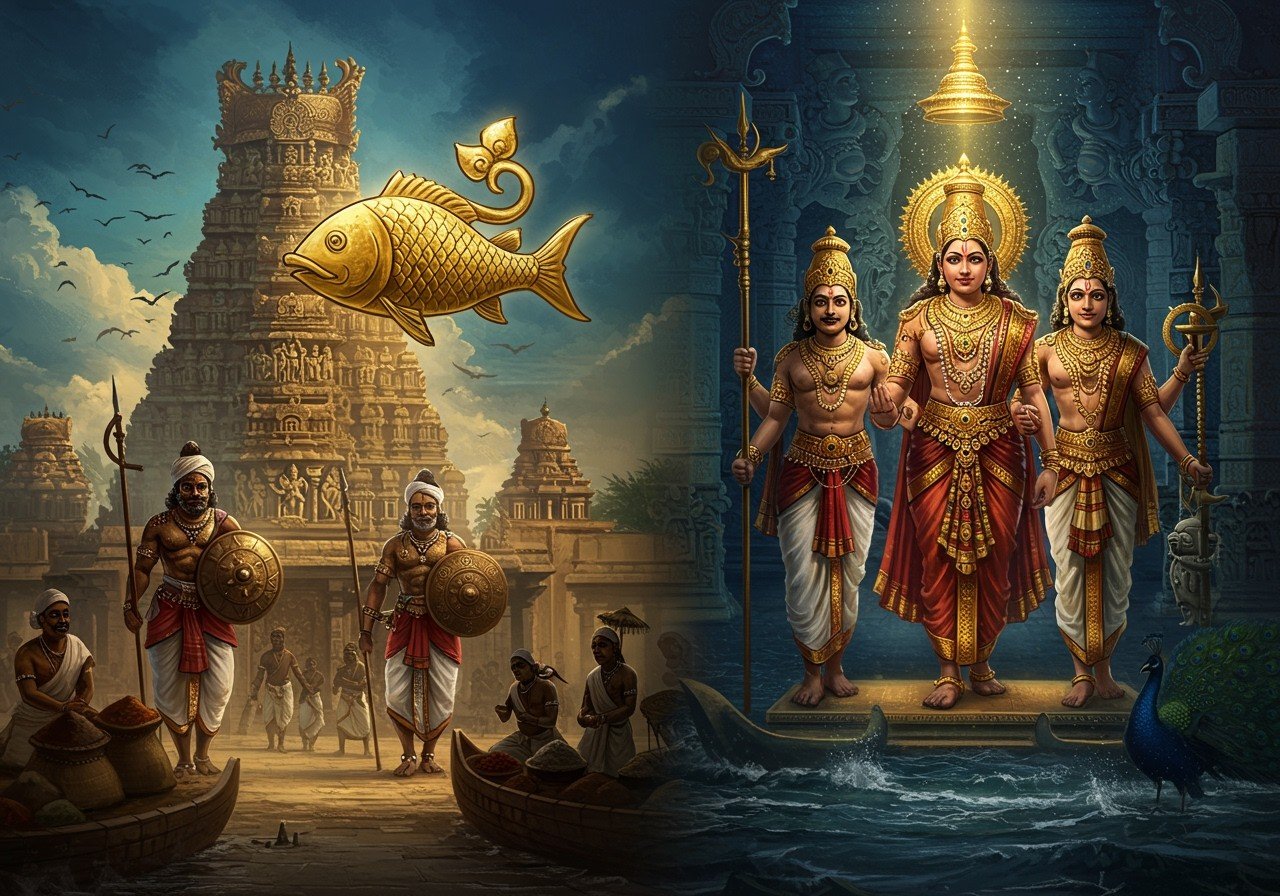
The Pandyan Empire, a prominent dynasty in South India, left an indelible mark on the region’s history and culture. This empire flourished in two distinct periods: the First and Second Pandyan Empires. This blog post delves into a comparison of these two eras, highlighting their unique characteristics, accomplishments, and eventual decline.
The First Pandyan Empire (c. 600 BCE – 9th Century CE)
Origins and Extent
Emerging around 600 BCE, the First Pandyan Empire established its dominion over regions including present-day Madurai, a city renowned for its cultural and historical significance. Its influence extended across a substantial portion of South India, laying the foundation for a rich cultural legacy.
Political and Economic Structure
The empire’s political structure revolved around a central monarchy supported by local chieftains, enabling effective control over diverse territories. The economy thrived on agriculture, facilitated by the fertile lands of the region, along with trade and commerce, connecting the empire with other regions.
Culture and Religion
The First Pandyan Empire witnessed remarkable advancements in literature, art, and architecture. Temples and other architectural marvels from this era stand as testaments to their cultural achievements. Hinduism played a central role in the empire’s religious landscape, with royal patronage supporting temples and religious practices.
Decline
Internal conflicts, coupled with external invasions from neighboring kingdoms, gradually weakened the First Pandyan Empire. The rise of the Chola Empire further contributed to its decline, marking the end of an era.
The Second Pandyan Empire (13th – 14th Century CE)
Resurgence and Expansion
The Second Pandyan Empire emerged in the 13th century CE, following the decline of the Chola dynasty. It expanded its territorial reach significantly, marking a resurgence of Pandyan power in South India. This era saw the empire reach its zenith under Jatavarman Sundara Pandyan I in the 13th century.
Political and Economic Developments
The Second Pandyan Empire adopted a more centralized administrative system compared to its predecessor, strengthening its control over its territories. The economy flourished, driven by robust trade connections with Southeast Asia and the Middle East. This period witnessed a golden age of economic prosperity for the empire.
Cultural Renaissance and Religious Practices
This era witnessed a cultural renaissance, with remarkable achievements in literature, art, and architecture. The construction of magnificent temples and intricate irrigation systems showcased the empire’s architectural prowess. Hinduism continued to be the dominant religion, with royal patronage extending to temples and religious institutions.
Decline
The decline of the Second Pandyan Empire was marked by internal conflicts, particularly succession disputes such as the one between Vira Pandya II and Sundara Pandya III. External invasions, including the Khalji raids and Hoysala incursions, further weakened the empire, ultimately leading to its downfall in the 14th century.
Comparing the Two Eras
Both empires shared core elements such as a strong emphasis on Hinduism and remarkable contributions to South Indian culture. However, they differed in their political structures, economic strategies, and the nature of the challenges they faced. The First Empire had a more decentralized political system and relied heavily on agriculture, while the Second Empire adopted a more centralized administration and benefited greatly from extensive trade networks. Both empires ultimately succumbed to a combination of internal strife and external pressures.
Poojn.in: Connecting You to India’s Rich Cultural Heritage
Just as the Pandyan rulers patronized temples and religious rituals, you too can connect with India’s rich cultural heritage through poojn.in. As India’s leading online store for cultural and religious goods, poojn.in offers a vast collection of authentic puja items, ensuring you can maintain traditional practices with ease and reverence.
-
Premium Puja Items: Discover pure copper and brass items, ideal for creating a sacred atmosphere in your home. Explore our copper collection.
-
Traditional Offerings: Find authentic bel patra, other ritual leaves, and premium incense for your daily puja needs. Browse our range of traditional offerings.
-
Sacred Malas: Enhance your spiritual practice with genuine rudraksha malas and other sacred beads. Find your perfect mala here.
Explore the rich traditions of South India and beyond with poojn.in. Visit us today to discover a wide array of products that honor India’s cultural legacy.
Further Exploration: Related Articles
- Dravidian and Nagara Architecture: A Comparison of Styles
- Dravidian Temples: A Guide to Their Key Architectural Features
- Exploring Dravidian Architecture: South India’s Ancient Temples


